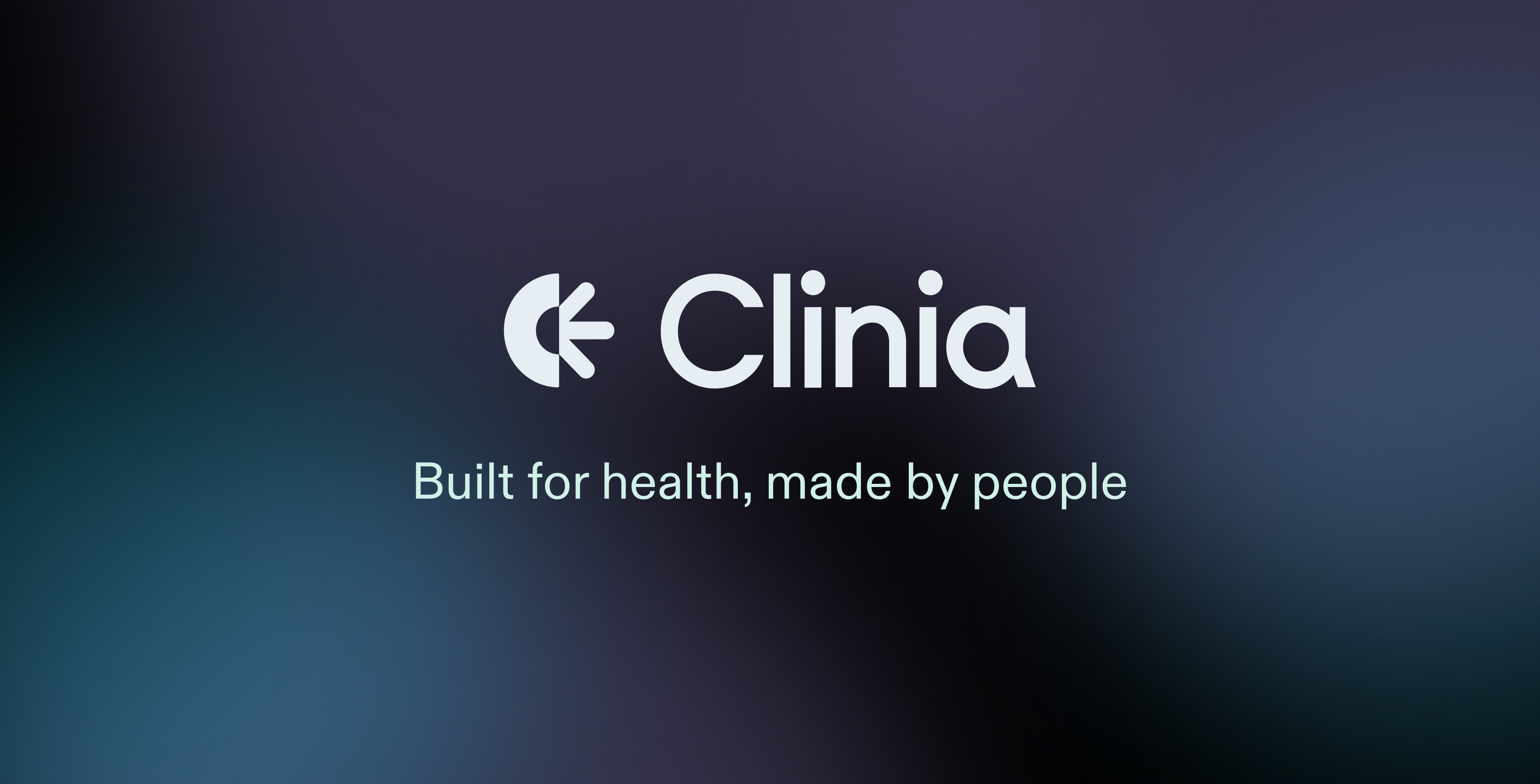When a Liberated Company Grows: Freedom Meets Complexity




Clinia was founded by three co-founders and incorporated in March 2016, more than nine years ago. From the very beginning, the leadership showed a strong commitment to the principles of transparency, autonomy, and accountability. This orientation was reinforced when our People & Culture lead—who had studied the concept of the liberated company in depth—joined Clinia in 2019.
As the culture took shape, the idea of becoming a liberated company naturally emerged as an extension of the founders’ core values.
A liberated company is an organization that empowers its members with the autonomy, responsibility, and freedom to make decisions without rigid hierarchies. It relies on trust, transparency, and shared purpose rather than control and bureaucracy to drive performance and engagement.
When you’re small, applying these principles feels almost effortless. Everyone sees each other daily, decisions happen quickly, and alignment comes naturally. Trust is visible, and autonomy is broad.
But growth changes the equation. Clinia went from three members in 2016 to forty in 2025. As headcount grows, new people arrive who haven’t experienced the founding culture. Communication gets noisier, decisions take longer, and alignment becomes harder to sustain. Freedom doesn’t disappear, but it inevitably mutates. It becomes more fragile—and at times, even a source of friction.
When things feel unbalanced, the instinct is often to fall back on a traditional model. Staying true to liberation is a constant challenge. It takes twice the effort when times are tough. If leadership slips into ego-driven behaviours, maintaining it becomes nearly impossible. It requires generosity, time, and intentionality. And, above all, the vision must remain clear—without it, alignment erodes quickly.
Below is an overview of the dilemmas we face at Clinia as we navigate between the liberated company model and the demands of growth.
Autonomy vs. Alignment: In a small company, autonomy and alignment often come naturally. As the organization grows, however, individual decision-making risks leading to fragmentation. Preserving freedom while ensuring coherence is a constant balancing act.
Trust vs. Structure: Liberated companies rely on trust as their foundation. Yet scale inevitably introduces the need for formal processes—for budgeting, compliance, and coordination. The challenge lies in introducing structure without undermining the culture of empowerment.
Speed vs. Inclusion: In a liberated company, the goal isn’t to get everyone to agree on every decision. It’s to make sure the person best suited to a situation can act without being slowed down by layers of approval. As the company grows, it gets trickier. Leaders must keep delegating decision-making power even when they don’t know someone well or can’t see all of their work. Importantly, a liberated company does not seek consensus; it seeks to gather input from everyone who will be impacted by a decision, without requiring full consensus. This distinction allows decisions to remain agile while still benefiting from diverse perspectives.
Transparency vs. Focus: Radical transparency empowers members, but, at scale, it risks overwhelming them. The challenge is no longer “share everything,” but rather “share what matters.” Too much information creates noise; too little erodes trust.
Beyond these dilemmas lurk the hardest questions:
Without titles or hierarchy, who makes the call?
If no one is formally accountable, who ensures delivery?
Why persist in this model when it would be easier to revert to a traditional hierarchy? Because the benefits are too valuable to lose. The most obvious ones we observed include:
Members find more meaning in their work, feel motivated, and engage deeply in their tasks.
They take ownership of their work and collaborate effectively with their teams.
Members achieve a better balance between work and personal life.
The workplace becomes healthier, more human, and more supportive.
Teams take time to reflect, create, and innovate, adapting effectively to change.
Leaders collaborate better and demonstrate resilience.
Products and services improve in quality and impact.
Transparency and trust increase across the organization.
Work aligns more closely with the company’s social mission.
The company culture and employer brand become stronger, enabling the organization to attract and retain top talent.
Beyond these benefits, we believe this is the best way to build a sustainable business that both endures and thrives.
There is no perfect formula, but we’ve found a few practices that help navigate the tensions that come with growth:
Anchor autonomy in clarity. Freedom only works when vision and structure are clear. Processes, documentation, and ways of working provide the backbone for empowerment. This is why we’ve invested heavily in clarifying our vision and roadmaps so that every member knows the goals, priorities, and boundaries within which they can make confident decisions.
Build in constant feedback. Vision, structure, and guiding principles all start as version one. They grow stronger through iteration, shaped by the team’s input. At Clinia, we make feedback a habit—regular demos, shared updates, and open invitations for input ensure our work evolves in step with both our goals and the team’s insights.
Evolve our rituals. We preserve the spirit of openness and shared decision-making while adapting the form to fit our growth. Some whole-company meetings may take the shape of domain-based assemblies. In some teams, demos, once included in retrospectives, have become their own ceremonies. Weekly meetings rotate facilitators to give everyone a voice. We intentionally maintain rituals like Clinia Day, where the company gathers annually to reflect on vision and values, and sports clubs that nurture camaraderie, ensuring that connection and culture thrive as we grow.
Give everyone a voice. Members don’t need a management role to shape the company. Lunch & learns, DEI working groups, research circles, and feedback audits open space for contribution.
Maintain radical transparency—carefully. We open Slack channels for every project, with regular updates, so everyone can follow along if they wish without feeling overloaded. But for us, transparency extends past simply making information available: it also means deliberately bringing up sensitive topics, voicing frustrations, and creating space for conversations that might otherwise be brushed aside. This conscious effort helps ensure that what’s difficult isn’t hidden but addressed openly and constructively.
Involve all members in budgeting. Every member of the organization is consulted and encouraged to participate in the annual budgeting process. They can suggest expenditures for tools, training, or contractor budgets, which are then reviewed and approved, ensuring transparency and shared responsibility in financial decisions.
Embed 360° feedback. Feedback flows downward, sideways, and upward. By giving everyone the opportunity to provide and receive constructive input, we strengthen collaboration, personal growth, and alignment across teams.
Conduct collaborative Growth Reviews. These sessions focus on evaluating skill development and professional growth. Compensation adjustments naturally follow from the assessment of growth, and discussions include both the team lead and team members. This approach fosters fairness, transparency, and a shared understanding of how performance and development influence compensation.
Keep the conversation alive. Liberation isn’t a one-time design; it’s an ongoing practice. As the company evolves, so must its habits. The healthiest approach is to expect change and revisit practices before they break.
Perhaps the deeper lesson is that these dilemmas aren’t meant to be “solved” once and for all. They are tensions to be managed and signs that the organization is alive and evolving.
A liberated company that grows will always face the pull between freedom and coherence, trust and structure, speed and inclusion, autonomy and alignment. The goal isn’t to eliminate these tensions but to continually reinvent how we hold them together.
At Clinia, we see the liberated company philosophy as both our compass and our challenge. It anchors us alongside our B Corp certification, reminding us why the effort is worthwhile. It may feel like navigating against a strong wind, but it’s a healthy struggle—one that demands awareness, listening, and conscious leadership. In return, it creates a workplace where people can thrive.
1. Getz I, Arnaud G. The liberated company theoretical concept: current issues and the intimidating complexity of organizational design. J Org Design. 2024;13(4):125–145. doi:10.1007/s41469-024-00170-4. link.springer.com
2. Khoury M. The liberated firm: An integrative approach involving sociocracy, holacracy, spaghetti organization, management 3.0, and teal organization. J Clean Prod. 2024;380:135129. doi:10.1016/j.jclepro.2023.135129. sciencedirect.com
3. Poli É. From liberated leader to shared leadership: a process of transformation in liberated companies. J Org Design. 2024;13(3):89–103. doi:10.1007/s41469-024-00169-x. management-aims.com
4. Pastier K. Beyond democratic degeneration: horizontal and liberated organizations in practice. Org Stud. 2024;45(5):789–810. doi:10.1177/0143831X231223696.